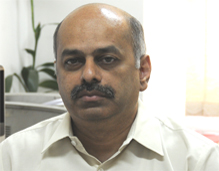Breivik’s Interest in Anthrax and Religious Extremism
Known as a lone wolf, Anders Behring Breivik planned and killed 77 Norwegians on July 22, 2011. Such a cruel expression of ‘belief’ by an individual shocked the entire world, particularly since it occurred in peaceful Norway.
Breivik’s terrorism was an act of intolerance that stemmed from the migration of Muslims to Europe. He has outlined his ideology in a 1,518-page online manifesto 2083 – A European Declaration of Independence. In this manifesto, Breivik reveals his views on politics, culture, history, Marxism, Islam, and so on. He discusses various ‘revolutionary’ concepts and also expresses his views on the use of Weapons of Mass Destruction (WMDs) to bring about a change in the system and society. His manifesto deals with issues related to conventional as well as chemical, biological and nuclear weapons.
Particularly alarming is his belief that Anthrax is ‘one of the most effective weapons’ and an instrument to help him achieve his goal. It appears that he neither had expertise in this field nor did he have a stockpile of Anthrax. According to the New York Times, the word Anthrax appears more than 50 times in his manifesto. He discusses the success of Anthrax attacks in the United States post 9/11. He is of the opinion that it should not be difficult to acquire Anthrax spores from the black market. He has also published a photograph of a man (mostly likely of himself) in a protective suit with respirator and a vial and a syringe in his hands. He speculates that any large scale Anthrax attack could kill 200,000 people and feels that this weapon has excellent shock value.
This highlights the necessity for a fresh debate on the otherwise ignored subject of biological weapons. Global concerns about biological weapons have been mainly concentrated on bioterrorism for many years. However, the history of the use of biological agents by non-state actors indicates that radical groups, religious fanatics and even disgruntled scientists have a deep interest in this form of intimidation and violence.
The most prominent case of the successful use of a biological weapon was by the Rajneesh (Osho) cult in the US state of Oregon. The cult had used Salmonella Typhimurium to contaminate salad bars in a particularly locality. Its purpose was not to kill people but make them ill for a few days and thus stop them from voting in local elections. Another instance of a radical group employing weapons of mass destruction was by the Aum Shinrikyo, which released Sarin gas in the Tokyo subway in 1995. This cult had made significant investments in biological weapons as well and had probably experimented with them though without much success. The third prominent instance was the anthrax attacks in the United States in the aftermath of the September 11 attacks, which was the handiwork of a disgruntled scientist.
These instances and Breivik’s interest in using Anthrax highlight the need to expand the debate on biological weapons and bioterrorism to include the involvement of religious groups and cults; something that must be undertaken at the 7th Review Conference of the Biological and Toxic Weapons Convention (BTWC/BWC) scheduled for December 2011.
Hitherto, the primary argument about the threat from biological weapons has been that they may not be the first preference for terrorist groups since their impact is mostly unpredictable. Secondly, terrorist organisations are generally involved in a struggle to gain political power or control over a certain territory; and the use of such WMDs could turn world opinion against them and thus impede the achievement of the groups’ final goal. Moreover, a covert state supporter (if any) may not support such an attack because of geopolitical compulsions. Thirdly, since terrorist organisations gain legitimacy from their supporters, the use of biological weapons could result in the death of those who support and sympathise with their cause. Lastly, most terrorist organisations have a ‘copy cat’ syndrome. Since no terrorist organisation has used biological weapons as the primary mode of attack till date, it seems unlikely that there will be any such attack in the future.
However, such arguments do not deter terrorists and if they decide to opt for this form of terrorism they will. None of the above arguments holds good for a lone wolf like Breivik or for that matter any other radically motivated group in any part of the world. Consequently, it is important to take the threat of use of biological weapons by radical groups and cults seriously. Their occasional acts of terrorism are likely to have major consequences particularly if these involve the use of biological weapons.
The future use of biological weapons, which are easy to carry and disguise, cannot be ruled out. Norwegian police found 5000 kilograms of fertiliser in Breivik’s farm house. While the actual purpose of such a large stockpile is not known, it might well have been for the manufacture of ‘conventional’ bombs or for developing some form of chemical weapons. Breivik’s terrorism highlights the fact that there are always such people in every society who could use weapons of mass destruction in general and biological weapons in particular.









